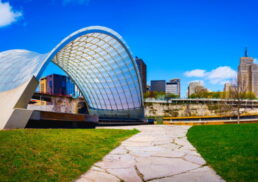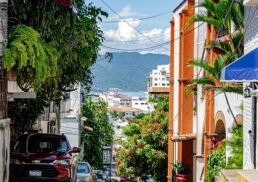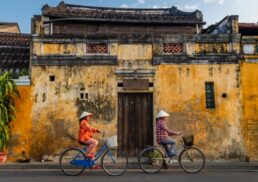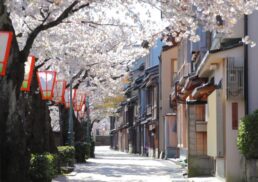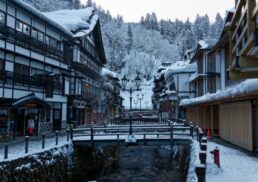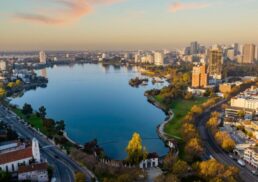This guide explores notable cities in Oklahoma, USA, including the vibrant city in Oklahoma USA. Discover what makes each city unique, their main attractions, and cultural highlights. Find out why these cities are worth visiting or living in.
Table of Contents
Key Takeaways
Oklahoma’s cities showcase a rich diversity, blending urban and rural experiences, cultural heritage, and natural beauty.
Oklahoma City serves as the state capital, boasting a dynamic downtown and a council-manager government structure for efficient administration.
Key cities like Tulsa, Norman, and Broken Arrow contribute to Oklahoma’s economic and cultural landscape, each with unique amenities and growth trends.
Overview of Oklahoma Cities
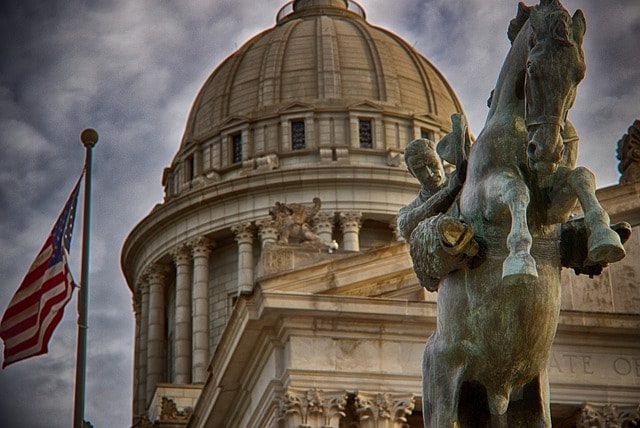
Oklahoma is a state where diversity thrives, and Oklahoma City’s states cities are a testament to this. Each city, from bustling metropolises to quaint towns, reflects the state’s rich cultural tapestry. The state’s cities offer an intriguing mix of urban and rural experiences, with attractions ranging from modern skyscrapers to historical landmarks.
The unique geographical features of cities like Alva and Blackwell add to their charm, drawing visitors who appreciate both natural beauty and historical context. Oklahoma’s cities are often characterized by their rich Native American heritage, with influences from various tribes woven into the fabric of daily life.
From the plains to the mountains, each region of Oklahoma has cities that mirror the local environment and culture. This variety ensures that no matter where you go in Oklahoma, you’ll find a city that offers a new perspective and a unique experience. Whether you’re exploring the vibrant arts scene in Tulsa or the historical sites in Norman, Oklahoma’s cities promise a diverse and enriching experience.
Oklahoma City: The State Capital
Oklahoma City, the state capital, stands as a beacon of government, culture, and history. The Oklahoma State Capitol, an iconic symbol of the city, provides engaging tours highlighting its art, history, and governmental significance, all free of charge. This landmark serves as both the seat of government and a testament to the city’s rich heritage.
The city’s government operates under a council-manager system, where a mayor and a nine-member city council represent different wards. This system ensures organized governance and better representation for the city’s residents. The mayor and city council members serve four-year terms, contributing to a stable and efficient administration.
Oklahoma City’s downtown area is a vibrant hub of activity, showcasing the city’s economic and cultural dynamism. Downtown Oklahoma City is a hub where tradition meets modernity, featuring corporate headquarters and entertainment venues. As you explore the city’s various neighborhoods, you’ll discover a blend of historic charm and contemporary development that makes Oklahoma City truly unique.
Major Cities in Oklahoma
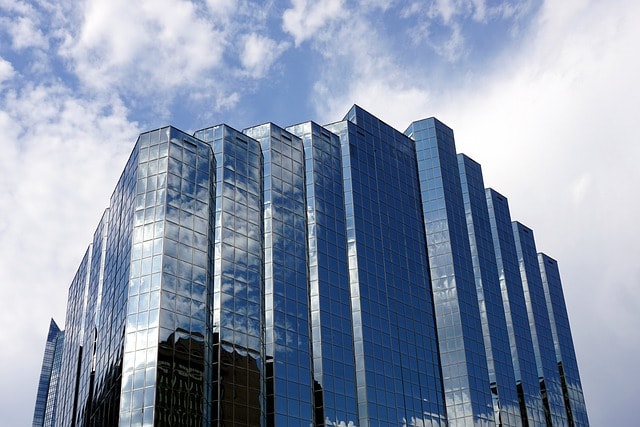
Beyond Oklahoma City, several other major cities contribute to the state’s vibrant landscape. Tulsa, with a population of approximately 401,190, is the second-largest city in Oklahoma and known for its dynamic arts scene and rich cultural heritage. Tulsa’s Art Deco architecture and bustling downtown make it a must-visit destination.
Norman, home to the University of Oklahoma, boasts a population of about 122,843. This city is a hub of educational excellence and cultural activities, making it a lively place to live and visit. The university infuses the city with youthful energy, hosting numerous events and activities centered around the campus.
Broken Arrow, recognized for its rapid growth, has a population of around 111,400. This city has seen significant development in recent years, transforming into a thriving community with excellent amenities and a strong sense of community.
Similarly, Lawton, with its population of roughly 94,696, is known for its military presence and proximity to Fort Sill, adding a unique dimension to its character.
Fastest Growing Cities in Oklahoma
Whitehorn Cove has emerged as the fastest growing city in Oklahoma, attracting attention for its impressive growth rate. Since 2020, this city has experienced an annual growth rate of 7.7%, illustrating broader trends in urban development within the state. This rapid expansion underscores the city’s potential and appeal to new residents.
Whitehorn Cove’s significant growth reflects broader trends in Oklahoma, where cities like El Reno are evolving to accommodate increasing populations. This expansion highlights both the economic opportunities and the quality of life these cities offer, making them attractive to new residents and businesses.
Historical Significance of Oklahoma Cities
Oklahoma’s cities hold deep historical significance rooted in the state’s past. In the early 19th century, the U.S. government established the Indian Territory, including present-day Oklahoma, for Native American tribes. This territory’s history is a testament to the resilience and cultural heritage of the Native American tribes that were relocated here.
The Indian Removal Act of 1830 led to the forced migration of several tribes into the Indian Territory, significantly shaping the demographic landscape of the area. By 1840, the territory was sparsely populated by various tribes, although it lacked formal territorial organization. The creation of Oklahoma Territory in 1890 marked the beginning of formal governance, setting the stage for statehood with the establishment of a territorial assembly and judicial system.
A poignant landmark in Oklahoma City is the Oklahoma City National Memorial, honoring the victims of the 1995 bombing. This site features a reflective pool and chairs representing each victim, serving as a solemn reminder of the tragedy and the resilience of the community.
Metropolitan Areas in Oklahoma
Oklahoma City metropolitan area stands as the largest cities urban zone in Oklahoma, serving as both the principal city and a major economic driver. As of 2022, the gross metropolitan product (GMP) of Oklahoma City was approximately $94.742 billion, underscoring its significant economic impact.
In 2015, the Oklahoma City metropolitan area was ranked as the 41st largest in the United States by population. Surrounding suburbs like Edmond (population nearing 94,054) and Moore (approximately 62,100) significantly contribute to the metropolitan area’s growth and diversity. These suburbs offer a blend of urban and suburban lifestyles, catering to a variety of preferences.
The Oklahoma City metropolitan area and its surrounding cities play a crucial role in Oklahoma’s economic and cultural landscape. The interconnectedness of these areas fosters a vibrant community that is both economically robust and culturally rich.
Government Structure in Oklahoma Cities
Many Oklahoma cities utilize a council-manager system, where elected officials appoint a city manager to oversee daily operations. This system allows for a clear division of responsibilities, with the city council focusing on policy-making and the city manager handling administration. This system ensures cities are run efficiently and effectively, emphasizing accountability and transparency.
In the council-manager model, the city council provides political leadership while the city manager ensures that the council’s policies are executed properly. This labor division provides a balanced governance approach, allowing elected officials to represent constituents’ interests while the city manager focuses on operational tasks.
Prevalent in many Oklahoma cities, this government structure provides a stable and efficient framework for municipal governance. It ensures that cities are managed professionally, with a focus on delivering quality services to residents and maintaining a high standard of living.
Parks and Recreation
Oklahoma City boasts an impressive array of parks and recreational areas, catering to residents and visitors alike. The Crystal Bridge tropical conservatory, a prominent downtown Oklahoma City landmark, is an oasis of lush greenery and exotic plants. This conservatory is a favorite spot for both relaxation and education, offering a unique escape from the urban environment.
Another gem in Oklahoma City’s park system is Scissortail Park, featuring a lake, paddleboats, a dog park, a concert stage, a splash park, a playground, and athletic facilities. As a vibrant community hub, Scissortail Park hosts a variety of activities and events throughout the year. Scissortail Park offers something for everyone, whether you’re seeking a leisurely stroll, recreational sports, or a concert.
Near the Civic Center Music Hall, Bicentennial Park hosts the annual Festival of the Arts, a significant cultural event attracting visitors from all over. Bicentennial Park, along with others like Will Rogers Gardens featuring landscaped gardens and walking paths, offers ample opportunities for outdoor activities and community engagement.
Cultural and Educational Institutions
Cultural institutions and educational establishments are vital components of Oklahoma City’s landscape. Renowned for its Chihuly glass collection, film theater, and various visiting exhibits, the Oklahoma City Museum of Art is a cultural cornerstone. Offering a diverse range of artistic experiences, this museum is a must-visit for art enthusiasts.
The Civic Center Music Hall hosts a variety of performances, from musicals to symphony concerts, enriching the city’s cultural life. This venue is a testament to Oklahoma City’s commitment to the arts, providing a platform for local and international talent.
Educational institutions play a crucial role in the city’s development. Oklahoma City Community College, the second-largest in the state, offers a wide range of programs supporting higher education. Oklahoma City University, founded by the United Methodist Church, offers various educational opportunities, enhancing the city’s reputation as a learning center.
Economic Drivers: Natural Gas and Oil
Natural gas and oil are major economic drivers in Oklahoma, contributing $55.7 billion to the state’s GDP in 2023, representing 22% of the state’s economic activity. This sector is a major revenue source and a critical component of the state’s job market.
The oil and natural gas industry supports over 200,000 jobs in Oklahoma, accounting for $31 billion in household earnings. Major employers like Tinker Air Force Base and Chesapeake Energy in Oklahoma City play crucial roles in the local economy, underscoring the importance of these industries.
Initiative and Referendum Process
Specific laws detailed in Title 34 of the Oklahoma Statutes govern the initiative and referendum processes in Oklahoma. Proponents must draft a petition and notify the Secretary of State before filing. This process ensures that initiatives and referendums are well-organized and transparent.
Supporting an initiative petition requires a minimum of 8% of the votes cast in the last gubernatorial election. The Governor can call a special election for voters to approve or reject these measures, ensuring the people’s voice is heard in the legislative process.
Maps and Geographic Boundaries
Oklahoma is divided into 77 counties, each with distinct geographic boundaries. Boundaries are defined by natural features like rivers and mountains, and man-made lines, creating a diverse landscape. The state’s borders with six other states impact its geographic layout and regional interactions.
Neighboring states—Colorado, Kansas, Missouri, Arkansas, Texas, and New Mexico—play significant roles in shaping Oklahoma’s geographic and economic landscape. County maps highlight major highways and key geographical landmarks, providing valuable information for residents and visitors.
These maps are crucial for understanding the state’s layout and planning travel or business activities. They showcase each region’s unique characteristics, from bustling urban centers to tranquil rural areas.
Famous Landmarks and Attractions
Oklahoma is home to numerous famous landmarks and attractions that draw visitors from around the globe. Tulsa’s Philbrook Museum of Art, renowned for its extensive art collection and beautiful gardens, is a cultural treasure. The museum’s exhibits and stunning landscapes provide a serene and enriching experience for art lovers.
Historic Route 66, often called the “Main Street of America,” runs through Oklahoma, dotted with vintage motels and quirky roadside attractions. One such attraction is Catoosa’s Blue Whale, a whimsical structure popular for photos. This route offers a nostalgic journey through America’s past, showcasing small-town charm.
The Myriad Botanical Gardens in Oklahoma City is a must-visit, featuring various plants, walking paths, and a children’s garden. This urban oasis offers a peaceful retreat in the heart of the city, where visitors can enjoy the beauty of nature.
These landmarks and attractions highlight the diverse cultural and natural heritage of Oklahoma’s major cities.
Chekout the 20 Oklahoma Landmarks.
Summary
Oklahoma City stands out as a dynamic and vibrant city that encapsulates the essence of Oklahoma. From its historical significance and robust economic drivers to its rich cultural and educational institutions, Oklahoma City offers a blend of tradition and modernity that appeals to residents and visitors alike. The city’s parks and recreational areas, along with its government structure, contribute to a high quality of life.
Exploring beyond Oklahoma City, other major cities like Tulsa, Norman, and Broken Arrow each bring their own unique contributions to the state’s landscape. Whether it’s the rapid growth of Whitehorn Cove or the historical narratives of the Indian Territory, Oklahoma’s cities are diverse and full of stories waiting to be discovered. This guide provides just a glimpse into the rich tapestry that makes Oklahoma a remarkable place to live, work, and visit.
Frequently Asked Questions
What makes Oklahoma City an important city in Oklahoma?** **?
Oklahoma City is important as the state capital and a key economic center, hosting vital industries such as natural gas and oil, along with crucial cultural institutions. Its role significantly influences the state’s economy and governance.
Which city is the second largest in Oklahoma?** **?
Tulsa is the second-largest city in Oklahoma, boasting a population of around 401,190.
What is the fastest growing city in Oklahoma?** **?
Whitehorn Cove is the fastest growing city in Oklahoma, experiencing an impressive annual growth rate of 7.7% since 2020. This growth indicates a strong and vibrant community.
How is the government structured in Oklahoma City?** **?
Oklahoma City is structured with a council-manager system, featuring a mayor and nine city council members who govern, while a city manager manages daily operations. This structure ensures effective administration and local governance.
What are some famous landmarks in Oklahoma?** **?
Oklahoma is home to notable landmarks such as the Philbrook Museum of Art in Tulsa, historic Route 66, Catoosa’s Blue Whale, and the Myriad Botanical Gardens in Oklahoma City. These sites reflect the state’s rich culture and history.
